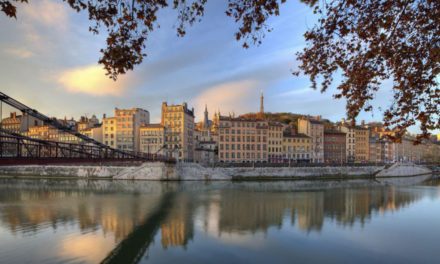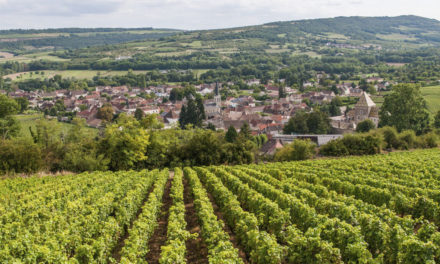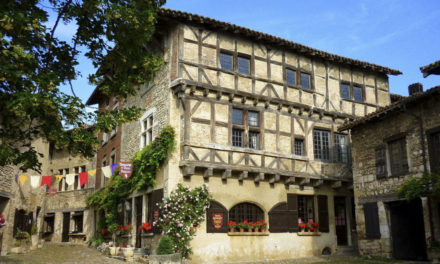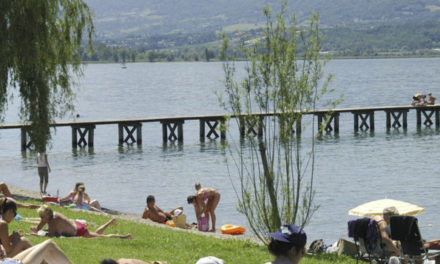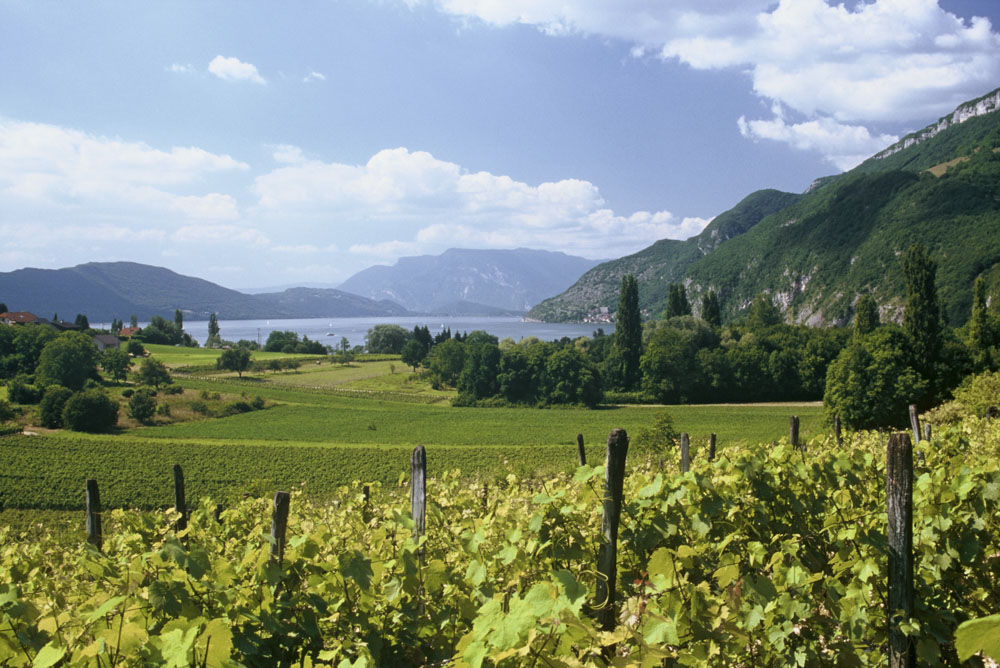
Image – Vineyard in Brison-Saint-Innocent and Lake Bourge, Copyright Atout France/Eric Anglade
The medieval county, then duchy, of Savoie (or Savoy) became French by vote in 1860. It was divided into two départements, Haute Savoie to the north, plain Savoie to the south. Savoie is dominated by the Vanoise range, the second most important one in France after that of Mont Blanc. The Val d’Arly and beautiful Beaufortain (renowned for its Beaufort cheese) form the link between Savoie and Haute-Savoie. The Isère valley circles the Vanoise to the north, the Arc valley to the south; they are almost better known as the Tarentaise and Maurienne respecitively. Savoie, like Haute-Savoie, is famed for its world-class ski resorts, amongst which are the clutch in the Trois Vallées, including Courchevel, Méribel and Val Thorens, while celebrated Val d’Isère lies at the very end of the Isère valley. The ski trains run by Eurostar go from London -Waterloo right to Bourg St-Maurice along the Isère and are a popular means of reaching the slopes easily and painlessly. Alternatively, you can fly to a number of airports. Whilst Tignes has less of the charm of the older buildings, it has the advantage that one can ski there in the summer as well as the winter. As one might expect of such an alpine stronghold, there are some very impressive mountain passes, many of which can only be crossed in summer and which include the Col de l’Iseran, the highest pass in Europe at 2,764 metres and equally beautiful but slightly less elevated, the Col du Galibier and the Col du Petit St Bernard. The scope for those to whom heights hold an appeal is endless in this alpine department.
Towns in Savoie
Hotels in Savoie
Chambéry
As well as ski resorts, Savoie has some intriguing towns. Chambéry, once home to the dukes of Savoy, boasts a château and many monuments as well as several major museums, one devoted to Savoie history in the former abbey of St-François, another to the fine arts. The museum of Les Charmettes just above town, where Jean-Jacques Rousseau sought refuge. Chambéry lies just south of the Lac du Bourget, the largest natural lake in France. Aix-les-Bains, a spa resort since Roman times, rises on the slopes above the lake. It is also quite a centre for watersports. Albertville, host of the Winter Olympics in 1992, stands close to the confluence of the Arc and Isère rivers, and is named after one the dukes of Savoie. Above town, the medieval centre of Conflans, has been beautifully restored. In the south of the département, St-Jean-de-Maurienne also proves a fine city with major monuments and a splendid cathedral, all surrounded by vast peaks The ‘Baroque route’ leads to 64 Baroque churches and chapels in the Tarentaise, Maurienne and Val Montjoie, nestling in valleys and perched on hilltops, their bulbous spires standing out in stark relief against the snowy mountains, their typical simple Alpine architecture belying the gilded, putti-filled interiors.
Aix-les-Bains
The central part of the Massif de la Vanoise has become the Parc National de la Vanoise, a rich haunt of flora and fauna including chamois, ibex, marmots, golden eagles, ptarmigan, black grouse, black woodpeckers and the rare three-toed woodpeckers, currently only to be found in Savoie and Haute-Savoie in France. The park is home to a host of other wildlife, ranging from newts to butterflies, as well as numerous alpine plants, in particular, a variety of mountain primroses which carpet the banks by the roadsides in spring. The Lac du Bourget, near Chambéry and Aix-les-Bains, is the biggest natural lake in France, with fifty varieties of fish and is a popular venue for swimming, diving and sailing. On its shores, Hautecombe Abbey holds the key to the history of the Princes of the House of Savoie. Rising between Lac du Bourget and Lac d’Annecy, the Parc Régional Naturel des Bauges has an amazing natural landscape with hillsides of beech and fir trees. The park extends to 5,500 hectares in all and is the natural habitat of numerous chamois goats and ‘mouflons’, the horned wild sheep. Until the end of the 19th Century the main activity of this region was the extraction of charcoal.
Beaufort Cheese
Beyond skiing, hiking is a major pursuit in summer. The département has 860 kms of marked trails in the Beaufortain, Revard, Maurienne and Tarentaise. In culinary terms, Beaufort is one of the most renowned of local cheeses gleaned from the cows who graze in summer on the alpine pastures and give this delightful cheese its well deserved reputation. It gained AOC status in 1968. The cheese is generally matured for at least five months before being sold. The production of Beaufort ensures work for at least 1,000 farmworkers, 100 of whom are actively engaged in the manufacture of this remarkable cheese which also appears in tartes, fondue and soufflés. Further excellent cheeses from the département include Tome des Bauges, distinguising itself from other tommes by being spelt with just one m.
Travel in Savoie
The ski trains run by Eurostar go from London-Waterloo right to Bourg St-Maurice along the Isère and are a popular means of reaching the slopes easily and painlessly. Alternatively, you can fly to a number of airports from which you can proceed to your final destination by hire-car, mini-bus, coach or even helicopter.
Geneva helicopter transfers to Courchevel are offered by Hélisécurité who provide an excellent helicopter transfer service that links the region’s principal airports (Lyon, Grenoble, Annecy, Chambery and Geneva) to each of the Alpine ski-resorts.
| Title | Address | Description |
|---|---|---|
SAVOIE | Savoie, France |

